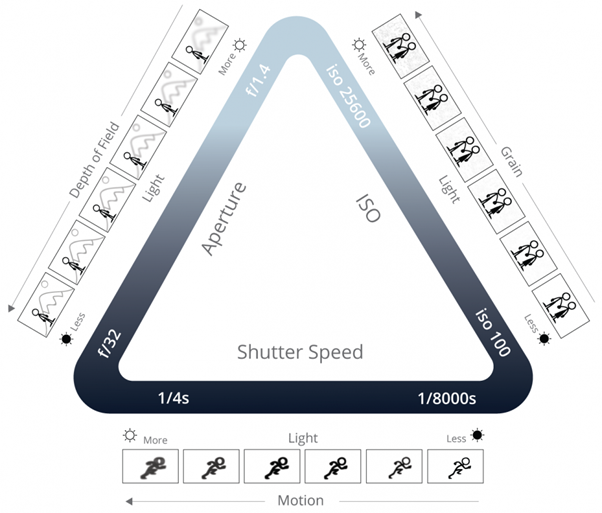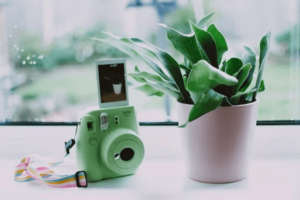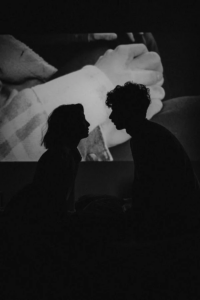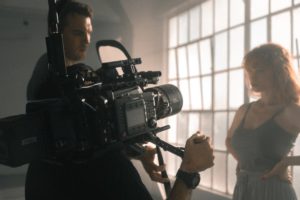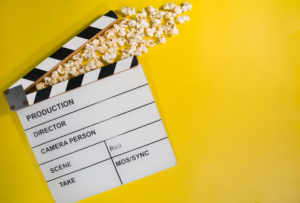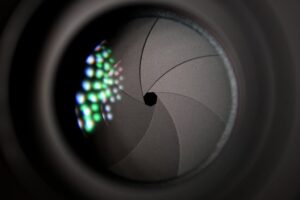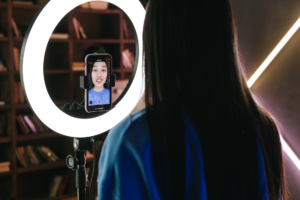It’s all about capturing light in photography. In reality, the word “photograph” comes from the etymology “light sketch.” To make a visible photograph, we must manage the amount of light exposed to a photosensitive surface, whether film or a digital sensor and that surface’s sensitivity to the light. In this series, we’ll go through the physics and characteristics of light before looking at how a camera and lens work together to adjust exposure using the “Exposure Triangle.”
The Exposure Triangle comprises the aperture, shutter speed, and ISO. These three camera and lens parameters work together to govern the amount of light that reaches the light-sensitive surface (aperture and shutter speed) and the surface’s sensitivity (film or digital ISO). These three variables have unique “side effects” in addition to affecting the brightness of a shot. For example, the depth of field is controlled by the aperture. At the same time, the shutter speed can blur or freeze the action, and the ISO can add or eliminate film grain or digital noise from a picture.
Each leg of the exposure triangle deserves its essay. Still, first, we must construct a photographic foundation with light and exposure before moving on to the three sides of this virtual polygon.
Importance of Light
The amount of light falling on the camera’s light-sensitive surface is known as exposure. There is a measured amount of light that lights your topic in any given scene, regardless of whether natural or artificial light is being emitted.
The intensity, duration, the distance between the light source and the subject, and light modification all affect the amount of light available. This isn’t going to be a light dissertation, but let’s go over some fundamentals and those four criteria before moving on to exposure management.
Light is fascinating because it has qualities that are similar to both waves of energy and particles. The way light interacts within and outside of a camera and lens is affected by this wave-particle duality. Let’s look at the light’s intensity, duration, distance, and modification:
During the 2003 San Diego flames, the Sun was shot sans filtration.
Intensity The Brightness of the Light
The brightness of the light is measured in photons let out by a light source or reflected by an object. The more photons emitted by a light source or reflected by an item, the brighter it is. A brighter photograph is produced by a sensor or piece of film that has been bombarded with more photons than a darker one. The number of photons exposed to a darker image was smaller than that of a brighter one.
Duration
The Sun is a constant source of light, but you can avoid it by riding the Earth as it rotates away from it—or simply getting inside! Artificial light may be turned on and off, and some of it is emitted in a brief flash. You can increase the number of photons collected by the camera by increasing the period of a specific light emitted from a light source.
Distance
Unfortunately for some of us, photography necessitates the use of mathematics. The draw of math will not let this lesson on exposure go unnoticed. The more photons a camera can record, the closer it is to the light source. The fewer photons you can collect, the more away you are.
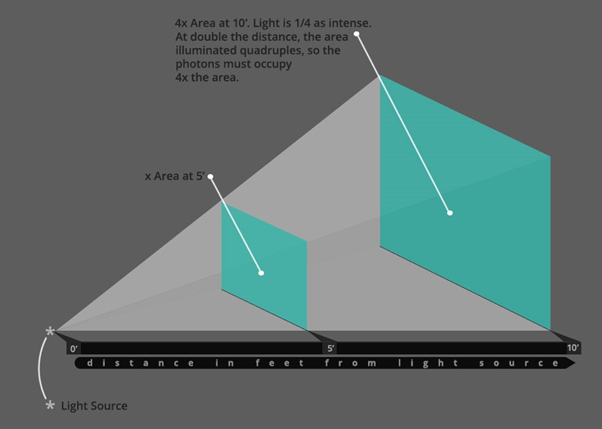
Modifications
Light modifiers come in various shapes and sizes to regulate and shape artificial and natural light. The Sun cannot be dimmed, but clouds certainly can. You can also have your subject go into the shade—or generate it yourself. Reflectors, diffusers, and gels are just a few of the light-modifying instruments available.
Measuring Light
Now that we know how to change the amount of light, we need to give it a numerical number to measure its intensity, adjust our camera settings accordingly, and then tweak them even more to brighten or darken an image. This image modification gives rise to the mathematical concept of “exposure value,” or EV.
The luminance of light is its intensity. However, we’re not interested in defining it even if it has a value given to it. This is because cameras can catch images in all sorts of light, including darkness. What matters is that we establish a baseline so that when we change camera settings, we know how the changes will affect exposure and how to correct, it if compensation is necessary.
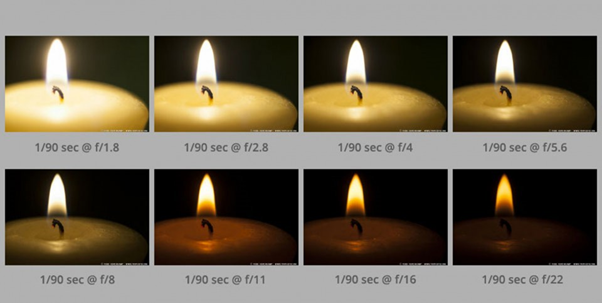
Simply said, the baseline for a “well-exposed” photograph is EV 0. We enter a minus EV if we adjust something on the camera to make the image darker. A positive EV is brighter. This is when the quantitative value described earlier comes into play. We assign numbers to EVs so that we may compare them to the baseline EV.
The purpose of exposure is to let a certain quantity of light into your camera and lens to capture your subject in a way that suits your artistic vision. I did not specify “appropriate exposure” as the goal, and I have now put quotation marks around the word twice.
Photography is an art form. Suppose you want to change the image’s brightness or darkness to convey your artistic vision better. In that case, don’t believe that every frame you capture must satisfy the concept of “correct exposure.”
You can use the Exposure Triangle to manage the light, which consists of three separate settings inside the camera. As previously stated, there are two ways to regulate the amount of light that enters the camera and exposes the photosensitive surface and one way to influence the sensitivity of that surface.
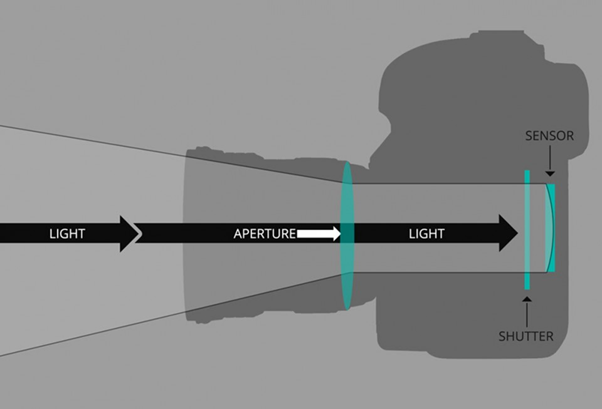
Comparing the camera to some aspects of the human eye is one technique to simplify these modifications. The aperture works similarly to the iris of the eye, which opens and closes the diameter of its opening to control the amount of light that enters the eye. When we are awake, our eyelids are generally open. Therefore shutter speed is akin to blinking. However, envision your eyelids opening for a split second to capture a single image before shutting, similar to the shutter on a camera. Finally, the sensitivity of the rods and cones in the back of the eye is comparable to ISO.
It’s crucial to understand that practically every camera with a variable aperture, shutter speed, or ISO offers a mechanism to manually manage these settings. Aperture rings and shutter-speed knobs can be found on older SLR cameras and lenses, although aperture, shutter speed, and ISO are likely to be controlled on today’s point-and-shoot cameras as well. Learning how to modify these settings and when to do so can help you enhance your photography by giving you more control over your photographs.
Clicking Photos in Harsh Sunlight
Let’s take a look at a low-light shot from the film 1917 as an example. The flashlight practicals are the only source of light in this scene. Finding a balance inside the photography triangle exposure will help you expose the scene properly while retaining image quality.
Movement
A higher shutter speed is often beneficial when shooting photographs with swift, fast movements. Catching a bird flying in the sky will appear too blurry in still-life photography with a slower shutter speed. A faster shutter speed of roughly 1/500th to 1/1000th of a second would be able to capture the bird in total clarity and crispness in mid-flight.
John Wick 3: Throwing Knives Scene
Importance of Aperture
The word “aperture” literally means “opening” or “hole.” A camera lens’ aperture is a hole that controls how much light gets into the film or sensor.
When a camera’s shutter button is pressed, the aperture widens to a predetermined width and admits a certain quantity of light in. To manage exposure, the aperture works in conjunction with ISO and shutter speed. You can save this image of an exposure triangle cheat sheet to refer to when shooting your next project.
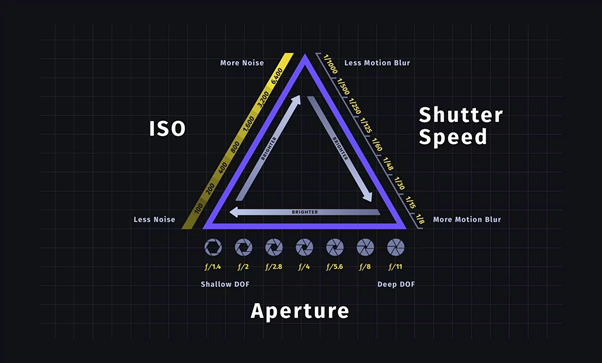
Image Source: The Studio Binder
The broadness of a camera lens’ aperture is measured in f/stops stated in numbers like 1.4, 2, 2.8, 4, 5.6, 8, 11, and 16, as seen in the exposure triangle chart.
Apertures are smaller than f/16 letting in less light. Larger apertures, such as f/1.4, allow more light in. Take a peek at our in-depth video breakdown of aperture to learn more about it. Take note of the visual variances in aperture sizes and how they contribute to the overall visual tale.
As the video suggests, the aperture impacts both exposure and depth of field. Small apertures, such as f/16, produce a significant depth of field, allowing for more focus. Conversely, shallow depth of field is achieved with larger apertures, such as f/1.4, allowing for a blurred background.
While the aperture is crucial in exposure triangle photography, our following variable, shutter speed, is highly influenced.
Importance of Shutter Speed
The aperture of a camera opens when the shutter button is pressed. The shutter speed of the camera determines how long the aperture remains open. Likewise, shutter speed determines how long the camera’s sensor is exposed to light.
Fractions of a second are used to measure shutter speed. A shutter speed of 1/60, for example, keeps the shutter open for one-sixtieth of a second. The more light that is let in, the longer the shutter speed is in time. Less light is let in when the time is shorter. Phlearn has created a video that explains shutter speed and how it influences exposure.
Like the other variables of the exposure triangle, shutter speed affects not only exposure but also other aesthetic features. For example, motion blur is affected by shutter speed. When photographing in low light, you might assume it’s a good idea to slow down your shutter speed to let more light in. So you dialed in on 1/20.
The disadvantage of using a slower shutter speed, such as 1/20, is that motion blur becomes considerably more noticeable when recording a moving subject or the camera itself moves.
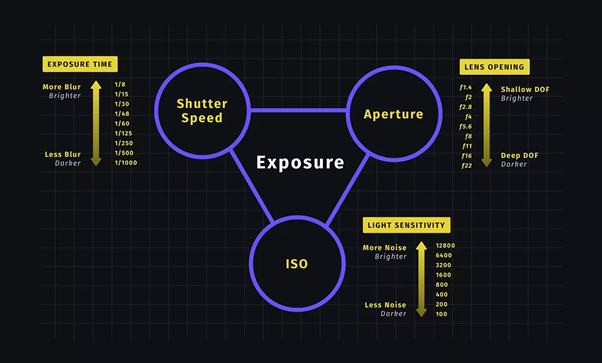
Fast shutter speeds, such as 1/1000, are precise, but they let in less light, making them unsuitable for darker images. When shooting video, this effect also occurs.
Fast shutter speeds, such as 1/1000, provide clear images that appear jerky and unnatural to the human eye. Slower shutter speeds result in more out-of-focus photos and motion blur.
Shutter angles and the 180-degree rule will help you achieve a cinematic effect when it comes to cinematography and shutter speed. What are shutter angles, and what do they mean?
The link between frame rate and shutter speed can be described using shutter angles. It illustrates how light flows through an angled opening once every revolution using the concept of rotary shutters. More light passes via larger angles. This means slower shutter speeds and increased motion blur.
Take a look at this scene from Saving Private Ryan, which uses a slower shutter speed for a more jittery, choppy effect.
Scene From Saving Private Ryan
Despite the fact that modern digital cameras do not employ a rotary shutter, shutter angles are still a common way of explaining motion blur and how it relates to framing rate. The 180-degree shutter rule is the most crucial principle to grasp when it comes to shutter angles.
Simply double up on the frame rate you are shooting at to discover your shutter speed, and you’ll have a natural degree of motion blur in your photo. A cinematic shutter speed is another name for this.
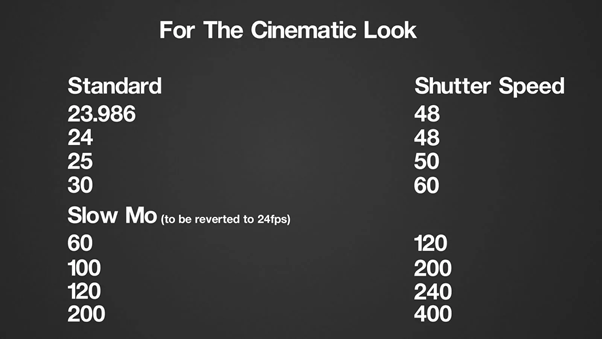
A cinematic shutter speed captures movement in the most natural way possible for the human eye. For instance, if you’re shooting at 30 frames per second, the cinematic shutter speed to use is 1/60.
Light travels through the aperture for a specified period set by the shutter speed before landing on the sensor in a digital camera. Our next setting, ISO, determines the sensitivity of the camera’s sensor to light.
ISO
The ISO setting controls how light-sensitive a digital camera’s sensor is. In a film camera, ISO refers to the light sensitivity of given film stock. Thanks to new technologies in DSLR cameras, a camera’s sensor may vary its ISO and sensitivity to light depending on the available light in an image.
ISO values include 50, 100, 200, 400, 800, 1600, 3200, and so forth. A lower ISO value, such as 50, reduces the sensitivity of a camera’s sensor to light. A higher ISO number, such as 1600, increases the sensitivity of a camera’s sensor to light. The relationship between ISO settings and exposure is deconstructed in this video explanation.
When shooting in low light, ISO may appear to be too good to be true. This is because it is far too good to be true. It costs money to increase your ISO to brighten up your photo. Image noise is the expense.
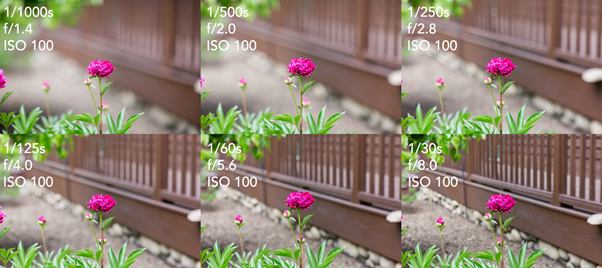
The term “image noise” refers to the unexpected change in color information within a photograph. When noise is present in large numbers, it creates textural and visual alterations in a photo, and appears low quality and amateurish.
However, some cinematographers have experimented with low levels of picture noise to mimic the look of film grain. This presents texture and liveliness to a frame. This video essay explores how film grain and noise may be used as creative tools.
You might be wondering, “What is the exposure triangle utilized for now that I understand each part of the exposure triangle?” It is used to correctly expose an image, to give you a rapid answer. However, depending on the situation you’re shooting in, how you properly expose a photograph will differ. Let’s take a look at a few common circumstances to see how you can balance the three elements to get a superb photo.
Conclusion
Shutter speed, aperture, and ISO are measured in terms of Stop. Doubling or halving the light that creates the exposure is known as a stop. Changing these variables can add or subtract stops. So the next time someone says you need to raise your exposure by a few stops, you will ideally understand what they’re talking about and how to do it.
